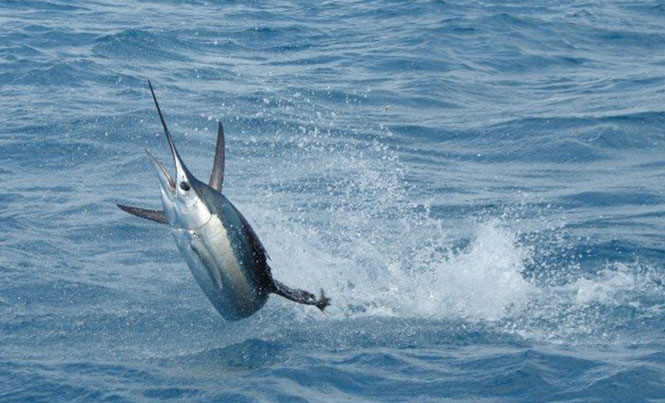
With individuals recorded at speeds of 75 km/hr, the Atlantic sailfish has one of the highest speeds recorded for aquatic animals
Sailfish is considered highly migratory. They have been known to travel as far as 3800 km in the northwest Atlantic! Their migratory patterns are likely linked to waters between 21° to 28° C. The Atlantic sailfish gathers in large groups in the Mexican Caribbean, giving us the opportunity to see them during winter.
The Atlantic sailfish can reach up to three meters and owes its name to the spectacular dorsal fin which stretches nearly the length of its body. It can also streamline itself by retracting it into a groove in the dorsal side of its body. It is thought they use the dorsal fin to herd fish, make itself look bigger to fend off predators, cool down after periods of high activity, and to increase body stability while swimming and hunting.
They are usually found in the upper layers of water but can go as deep as 200 meters. Although they usually do not exceed speeds of 36 km/hr, individuals have been monitored at speeds of 75 km/hr which is one of the highest speeds reported for aquatic animals! It is primarily caught in sport and artisanal fishing, and declines have been observed in Central America, Iran and India. However, despite its importance in sport fishery, there are no stock assessments or reliable landings data to understand the species and the threats it may face.
Although it is a highly prized game fish due to its size, strength, jumps, and speed, non-impact observation of the amazing wildlife we get to see through snorkeling tours seems a better approach to me than chasing and/or killing these amazing predators through any sort of fishery. For a bit more information: http://marinebio.org.